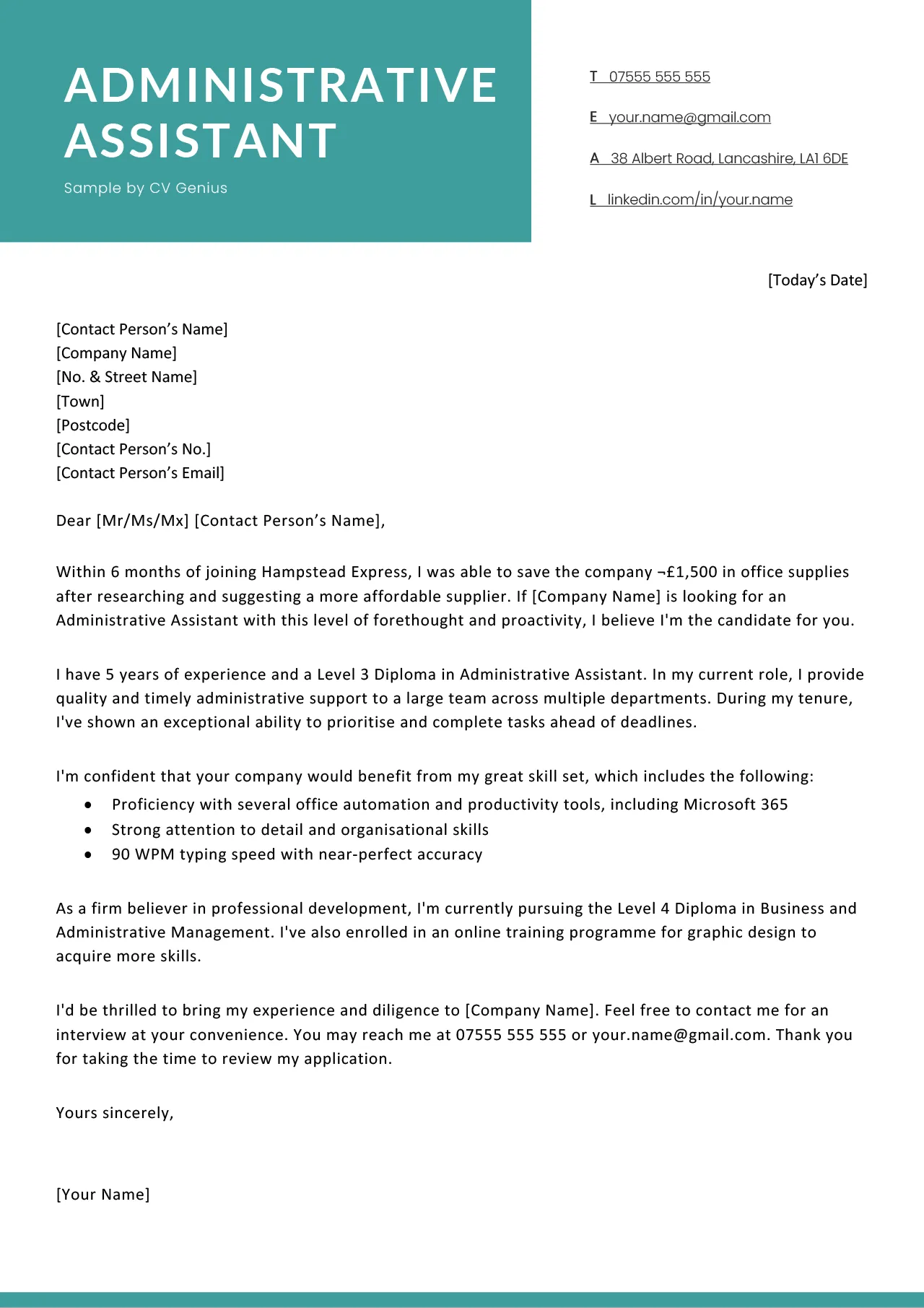Understanding the Importance of a Cover Letter for Admin Assistant Positions
In the competitive landscape of job applications, especially for administrative assistant roles, a well-crafted cover letter is not just a formality; it’s your first chance to make a positive impression. It serves as a crucial introduction, setting the stage for your resume and providing an opportunity to showcase your personality, skills, and enthusiasm for the position. Without a strong cover letter, your application may be overlooked, as it is often the first document a hiring manager reviews. A cover letter allows you to highlight your qualifications in a way that a resume alone cannot. It provides context and demonstrates your understanding of the specific job requirements and the company’s needs. It allows you to explain any gaps in employment, career changes, or other relevant information that might not be immediately apparent in your resume. In essence, a cover letter transforms your application from a simple list of qualifications into a compelling story of why you are the ideal candidate.
Key Components of a Successful Admin Assistant Cover Letter
A successful administrative assistant cover letter should be a concise yet comprehensive overview of your skills, experience, and suitability for the role. It should be tailored to each specific job application, reflecting your genuine interest in the company and the position. The key is to provide a compelling narrative that highlights your relevant skills and accomplishments while demonstrating your personality and communication style. The most impactful cover letters effectively blend professionalism with a personal touch, making a positive and lasting impression on the hiring manager. Focus on demonstrating how your skills align with the job description’s specific requirements, and provide examples of how you have used these skills to be successful in prior roles. Mentioning your interest in the company’s mission or values can also add weight to your application, by showcasing that you have taken the time to research and connect with the organization.
Contact Information and Introduction
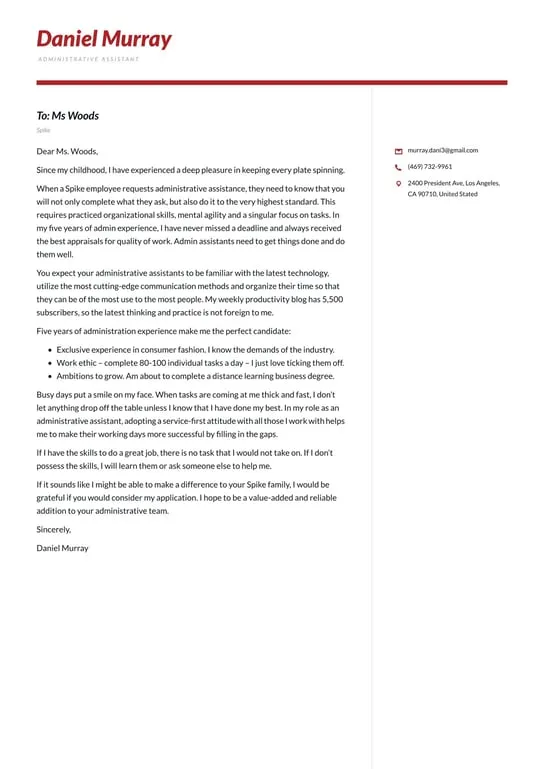
Begin your cover letter with your contact information, followed by the date and the hiring manager’s name and title, if known. In the introduction, clearly state the position you are applying for and where you found the job posting. Immediately capture the reader’s attention by expressing your interest in the role and the company. This section sets the tone for your entire letter and should demonstrate your enthusiasm and understanding of the job’s requirements. Aim to make a strong first impression, immediately establishing yourself as a qualified candidate. Use a confident and professional tone while also conveying your personality. Mentioning a mutual connection or referencing something specific about the company that attracts you can make your introduction more engaging. Focus on creating a narrative that draws the reader in and motivates them to continue reading about your qualifications and experience.
Highlighting Relevant Skills and Experience
The body of your cover letter is where you showcase your skills and experience in detail. Focus on the skills and experiences that are most relevant to the administrative assistant position. Use the job description as your guide, ensuring that you address each of the key requirements and responsibilities. Provide specific examples of how you have demonstrated these skills in past roles. This section is where you can differentiate yourself from other candidates by providing concrete evidence of your abilities and accomplishments. When describing your experience, use the STAR method (Situation, Task, Action, Result) to provide clear and concise details. Show how you have applied your skills to overcome challenges and achieve positive outcomes, quantifying your achievements whenever possible. Avoid simply listing your skills; instead, demonstrate how you have used them in practical situations. Tailor this section to each specific job, highlighting the most relevant aspects of your background.
Administrative Tasks
Administrative assistant roles involve various tasks, so highlighting your competence in these is crucial. Mention specific experiences like managing calendars, scheduling meetings, organizing travel arrangements, and handling correspondence. Provide specific examples such as efficiently managing complex schedules for multiple executives or coordinating large-scale events. If you have experience in preparing presentations or creating reports, make sure to include it. Emphasize your organizational skills and attention to detail, and how you use them to create efficient and organized workflows. Mention any experience you have with office supplies and inventory management, ensuring that the office operates smoothly. If you’ve streamlined any administrative processes, be sure to explain the positive impact this had. Demonstrate your ability to multitask and prioritize tasks effectively. This demonstrates your ability to create a positive environment where tasks are handled with efficiency and care.
Communication and Interpersonal Skills
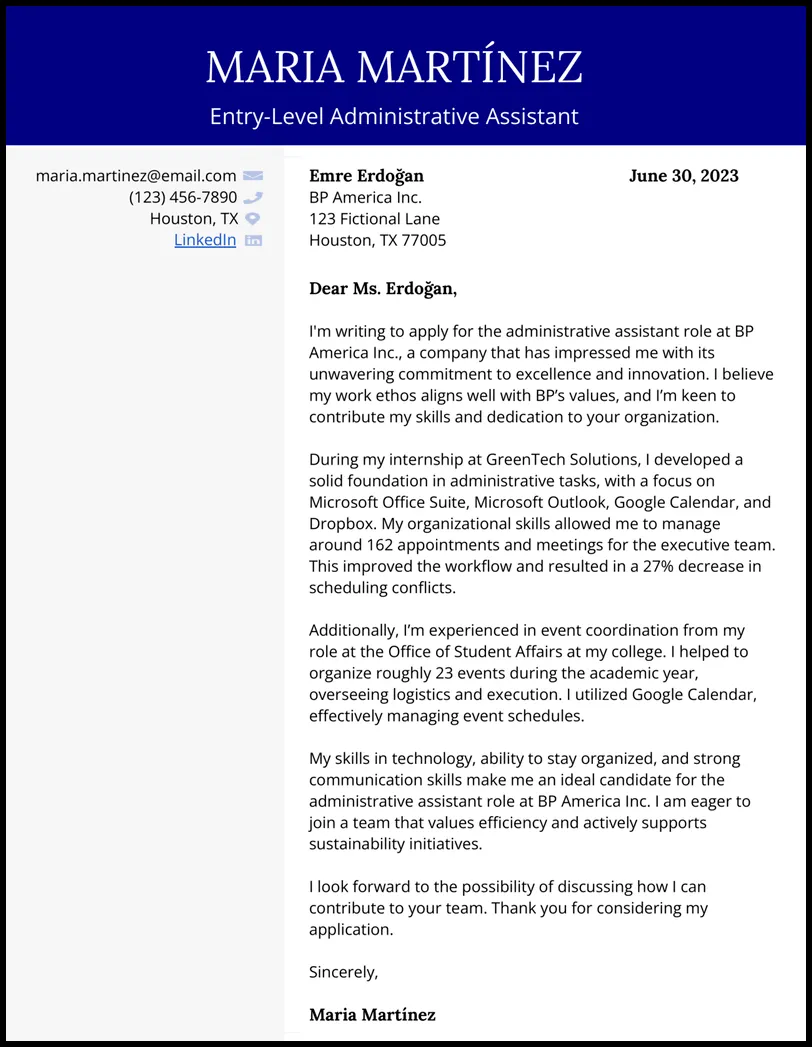
Administrative assistants frequently interact with internal teams and external clients, so strong communication and interpersonal skills are essential. Highlight your ability to communicate effectively, both verbally and in writing. Describe your experience in handling phone calls, emails, and face-to-face interactions. Emphasize your ability to build rapport and maintain positive relationships. Mention any experience with conflict resolution or handling difficult situations diplomatically. Showcase your active listening skills and your ability to understand and address the needs of others. Provide examples of how you have effectively communicated with diverse audiences and handled sensitive information with discretion. Highlight your ability to work collaboratively as part of a team, and your commitment to providing excellent customer service. Demonstrate the capacity to maintain a professional demeanor in all situations.
Software Proficiency
In today’s digital workplace, proficiency in various software and technologies is often a requirement. List the specific software programs you are proficient in, such as Microsoft Office Suite (Word, Excel, PowerPoint, Outlook), Google Workspace (Docs, Sheets, Slides, Gmail), and any other relevant programs used in administrative settings. If you have experience with CRM software, project management tools, or other industry-specific software, be sure to include it. Highlight your ability to learn new software quickly and adapt to changing technological requirements. Mention any certifications or training you have in relevant software programs. If you have experience using these software tools to streamline administrative tasks, include these accomplishments. This part of your cover letter shows that you are prepared for the technical needs of the job and can work effectively with different systems.
Showcasing Achievements and Accomplishments
In addition to listing your skills, it’s important to demonstrate your accomplishments. Use quantifiable results to show the impact you have made in previous roles. This could include improvements in efficiency, cost savings, or positive feedback from clients or colleagues. Use the STAR method to illustrate how you handled certain situations and what outcomes resulted. Highlighting achievements shows that you are not just competent but also results-oriented. This allows you to prove your value. Be specific when describing your successes, providing clear evidence of your contributions. This demonstrates that you go beyond simply completing tasks, and instead proactively seek to improve processes and outcomes.
Quantifiable Results
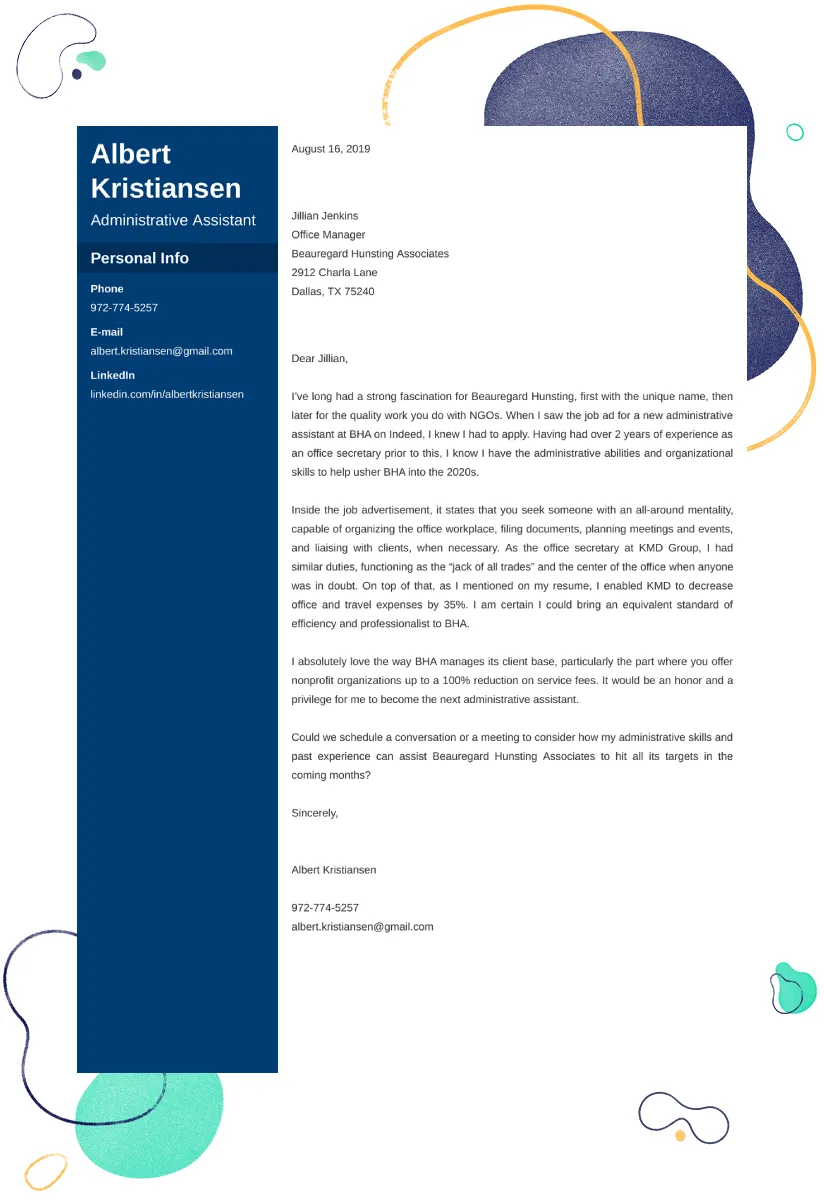
Whenever possible, include measurable results to demonstrate your impact. For instance, mention how you improved office efficiency by a certain percentage, reduced costs, or increased customer satisfaction. Use numbers to quantify your achievements, such as ‘managed a budget of $X,’ ‘coordinated Y events,’ or ‘handled Z customer inquiries daily.’ Such detailed examples give hiring managers concrete proof of your abilities. These figures show that you are not just skilled but also capable of delivering tangible results. This helps the reader understand the real value you can bring to the position. Quantifiable metrics illustrate your performance and provide the reader with compelling reasons to believe you are the right person for the job.
Problem-Solving and Initiative
Administrative assistant roles frequently require problem-solving and initiative. Provide examples of how you have identified and resolved problems in past roles, and showcase your ability to proactively anticipate and address potential issues. Describe how you have taken initiative to improve processes, implement new systems, or contribute to team success. Demonstrate your ability to think critically, make sound decisions, and take ownership of your work. Highlight your ability to work independently and take responsibility for your actions. Show that you are able to identify problems and propose and implement effective solutions, demonstrating your initiative and problem-solving skills. Presenting these examples will demonstrate your readiness to take on challenges and contribute to the workplace’s goals.
Tailoring Your Cover Letter to the Specific Job
Generic cover letters do not perform as well as those that are customized to a job. Customizing your cover letter is crucial for making a strong impression. Take the time to carefully review the job description and identify the specific requirements and qualifications. Tailor your cover letter to address these specific needs, highlighting your skills and experiences that are most relevant to the position. Research the company and its values to better align your letter with their culture. Show that you understand the company’s mission and goals, and explain how your skills and experience will contribute to their success. Demonstrating your understanding of the job requirements and the company’s values shows that you’ve invested time and effort to personalize your application, making you a more attractive candidate.
Researching the Company and Role
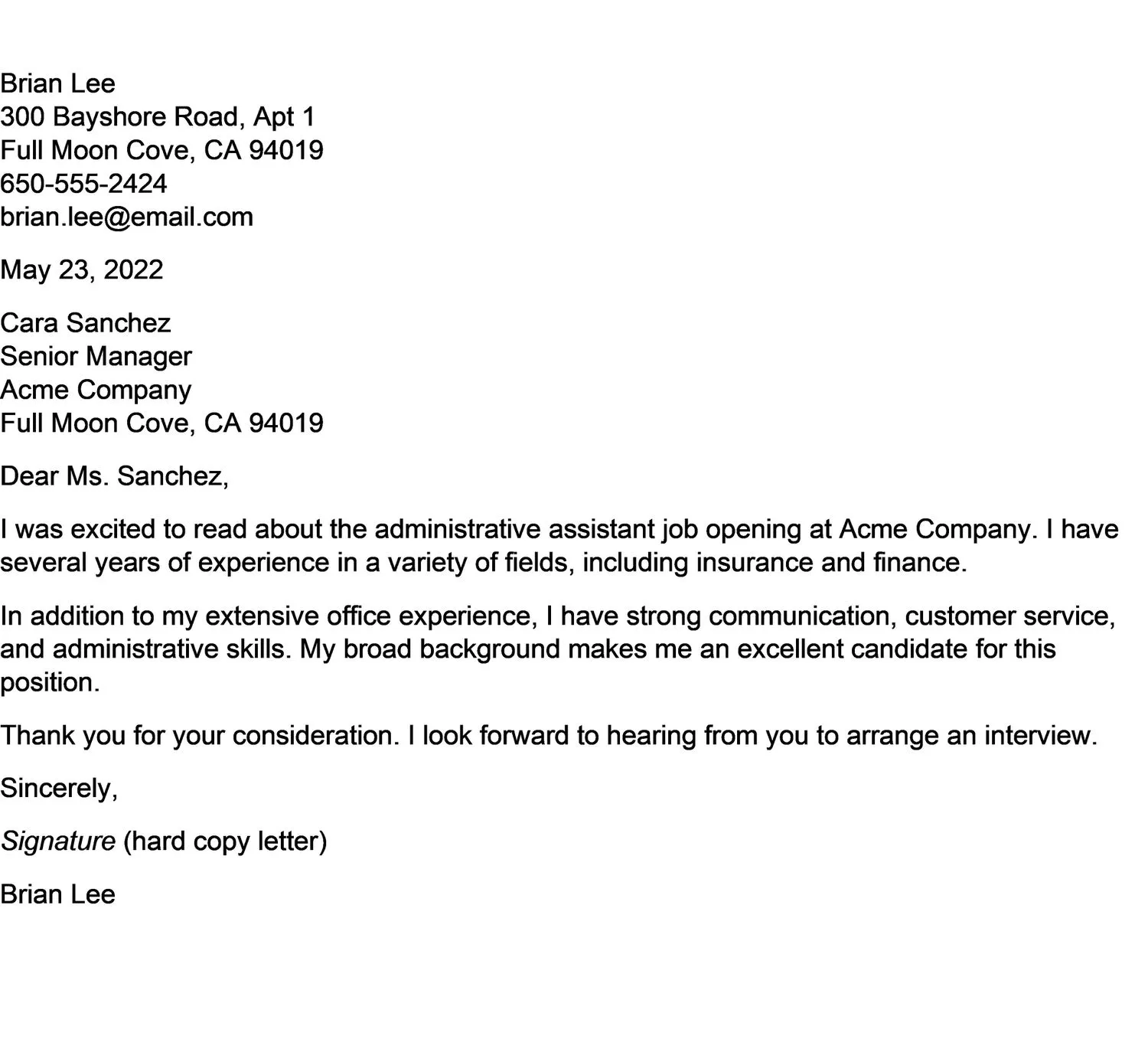
Before you start writing your cover letter, do thorough research. Visit the company’s website, read about their mission, values, and recent news. Review the job description multiple times to fully understand the responsibilities and expectations. If possible, research the hiring manager’s name and title. This will help you personalize your letter and show genuine interest in the company. Tailoring your cover letter to the job means you need to connect your skills and experience to the company’s needs. Researching the company shows that you have taken the time to prepare, showing your commitment to the role and that you see yourself fitting into the organization.
Using Keywords from the Job Description
One effective way to tailor your cover letter is by incorporating keywords from the job description. Identify the key skills and qualifications the employer is seeking and strategically weave these keywords into your cover letter. This ensures that your application aligns with the specific needs of the role and will help it pass through applicant tracking systems (ATS), where computers often scan for keywords. Use these keywords naturally, showing how your skills and experience match the job’s requirements. When reviewing the job description, carefully highlight the terms and skills the employer specifically mentions. This will help make your letter both relevant and optimized for the specific role, increasing your chance of being noticed by the hiring manager. Avoid keyword stuffing, and instead use the words in context.
Formatting and Presentation Tips
The formatting and presentation of your cover letter are essential. A well-formatted and visually appealing letter is easier to read and makes a positive first impression. Pay attention to the layout, font, and overall design. The look and feel of the cover letter communicates a sense of professionalism and attention to detail. Your cover letter should appear professional and polished. Use a clear and readable font, such as Arial, Times New Roman, or Calibri. Keep the font size between 10 and 12 points. Use a standard one-inch margin on all sides. Make sure the text is well-aligned and easy to follow. Ensure a clean layout, with appropriate spacing between paragraphs and sections. Proofread your letter for any errors.
Proper Formatting
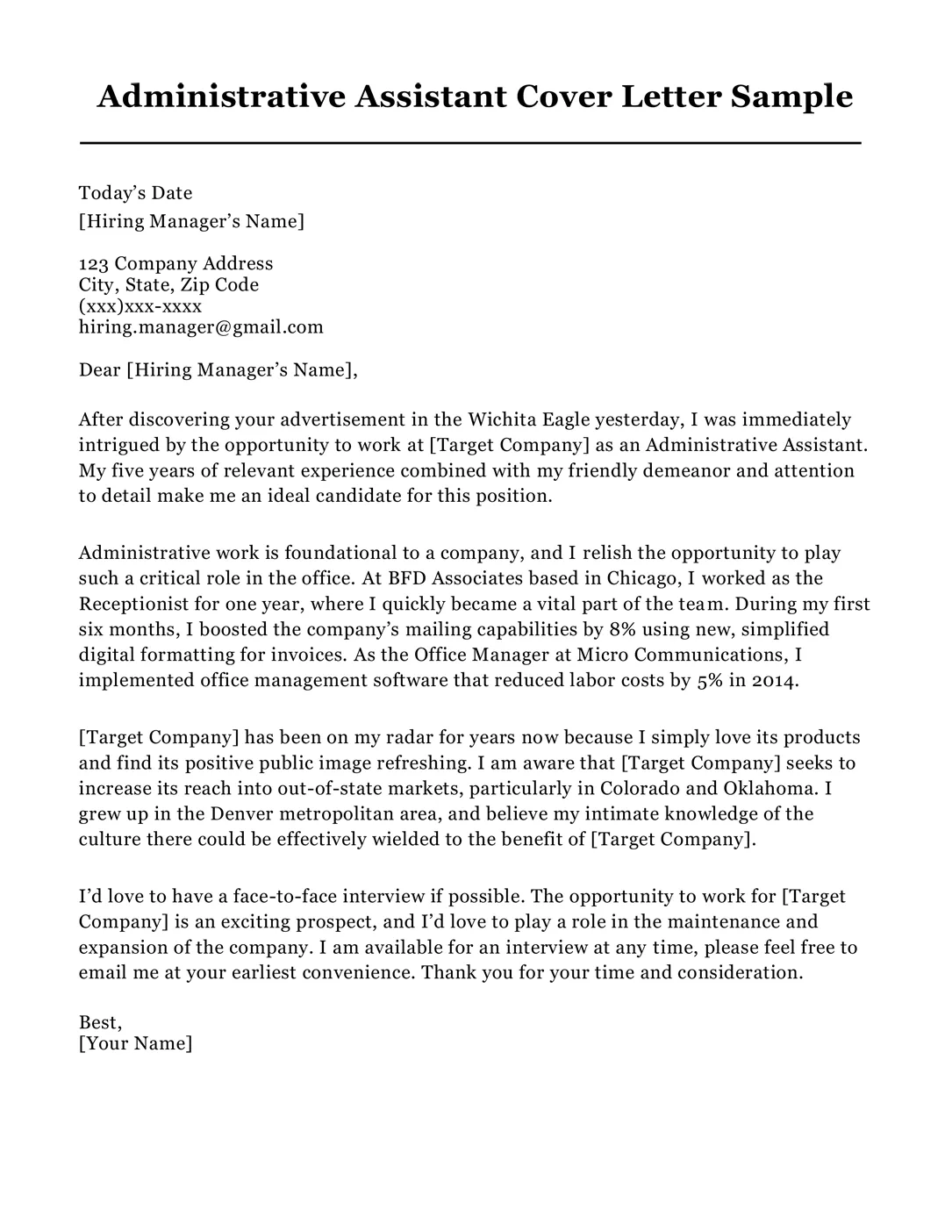
Formatting is vital to present your cover letter in a polished manner. Ensure your letter is free from errors, organized with clear sections, and easy to read. Use appropriate spacing, bullet points, and headings to structure your content logically. The format creates an organized and visually pleasing look. Select a professional font, and use consistent formatting throughout the letter. Ensure all contact information is accurate and up-to-date. Keep your letter concise and avoid long paragraphs. The proper formatting shows you have attention to detail and value precision. A neat and well-formatted letter makes your application stand out.
Proofreading and Editing
Proofreading and editing are the final steps to ensure your cover letter is perfect. Proofread your letter carefully, checking for any grammatical errors, typos, or inconsistencies. Consider having a friend, family member, or career counselor review your letter for feedback. Ensure your language is clear, concise, and professional. An error-free letter showcases your attention to detail and commitment to quality. Use a grammar checker, but do not depend on it alone. Read the document slowly and aloud to catch errors. Make sure your contact information is correct, as well as any specific details about the job. Proofreading ensures that your application leaves a lasting impression.
Cover Letter Samples and Examples
Reviewing cover letter samples can provide valuable insights and inspiration. Many resources online offer various examples for administrative assistant positions. These examples will give you an idea of how to structure your letter, how to phrase your content, and what information to include. Choose samples that align with your experience and the types of positions you are applying for. The examples offer great structure for your letter. They will help you craft a professional-looking cover letter that highlights your skills. Use these samples as a guide, but make sure your own cover letter is unique and reflects your own personality and experience. Tailor your letter to each specific job.
Sample Cover Letter 1
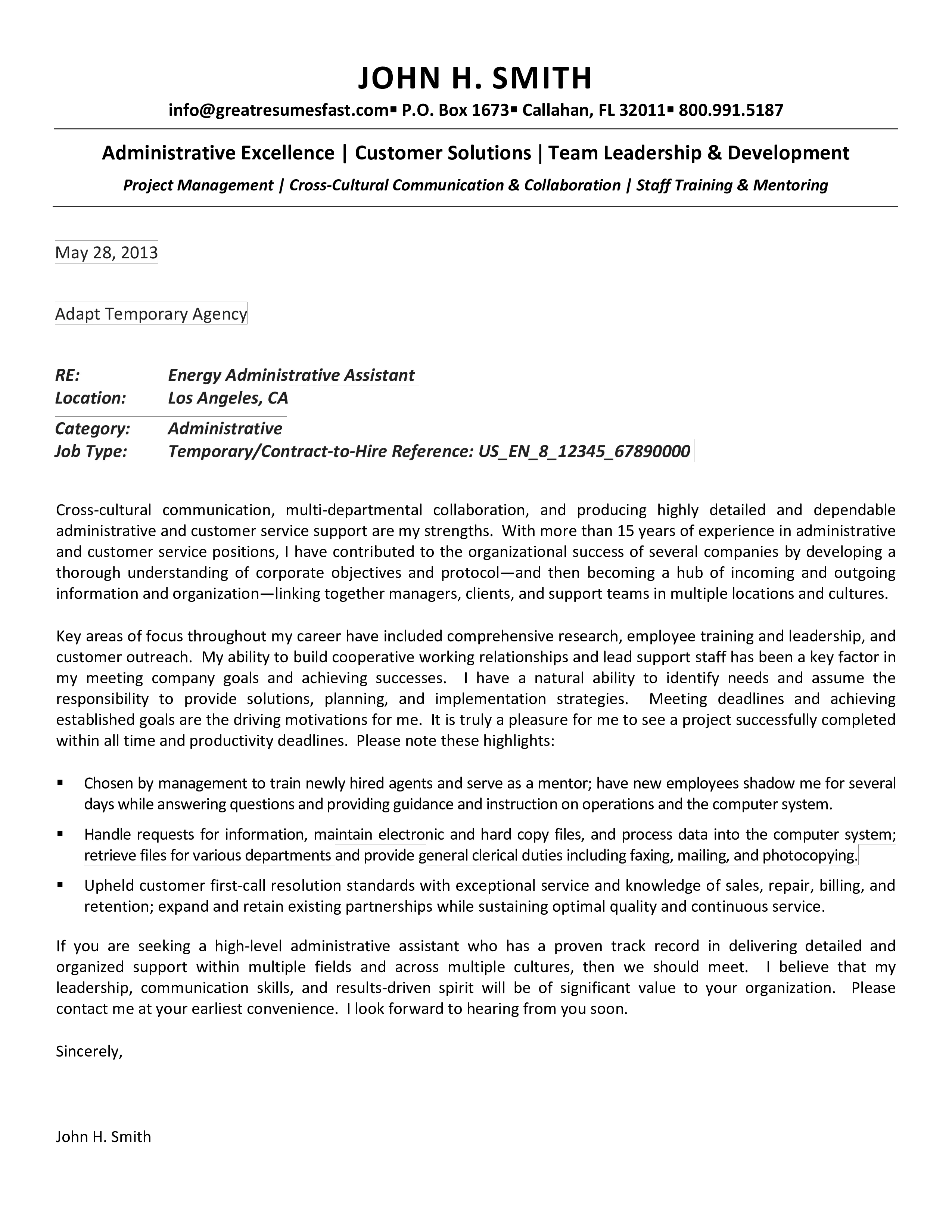
This sample highlights strong organizational skills, time management, and communication. [Include sample here].
Sample Cover Letter 2
This sample emphasizes experience in a specific industry or type of company and showcases software proficiency. [Include sample here].
Sample Cover Letter 3
This sample features a focus on achievements, with quantifiable results to show impact, as well as leadership skills. [Include sample here].
Conclusion
A well-written cover letter is a powerful tool for any aspiring administrative assistant. By following the guidelines and tips provided, you can create a compelling cover letter that highlights your skills, experiences, and achievements. Always tailor your cover letter to the specific job and company. Thorough proofreading and editing are also essential to ensure your letter makes a positive impression. A well-crafted cover letter has the power to open doors and help you to reach your career goals, helping you to secure an interview and eventually land your dream job. Use the resources at your disposal, and tailor your cover letter to make a strong impression and get your application noticed.
